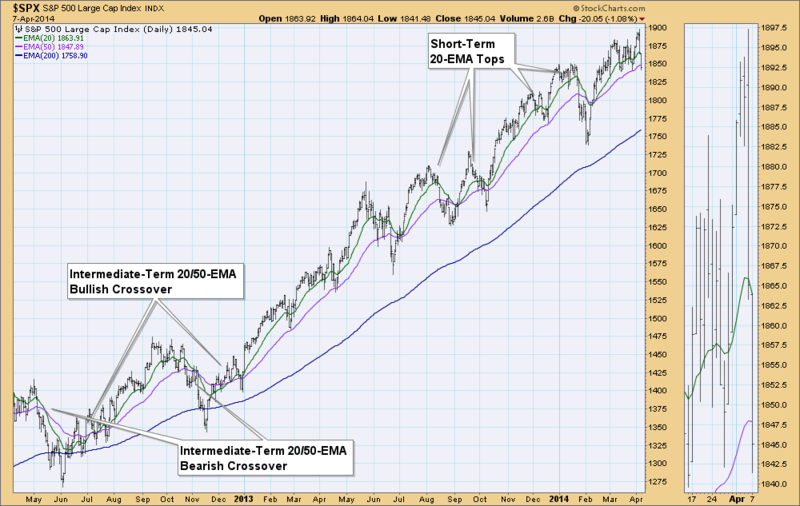Is this market pullback a bullmarket correction or the beginning of a bear Why it’s still a bit
Post on: 5 Сентябрь, 2015 No Comment

Tuesday, June 13, 2006 | Teeka Tiwari
Inflation’s rising, the Fed appears ready to unleash the interest rate hounds of hell, emerging markets are crashing, commodity stocks are tanking, and the economy appears to be slowing down. NASDAQ’s down 12%, the S&P’s down 6 ½% and the DOW’s down 7.82%. This market looks well and truly done … but is it?
By all appearances, the market looks and feels like it’s ready to fall off a cliff and begin a new ugly bear phase; being a bear here feels like the prudent, right and most comfortable thing to do. It very well may be, but there are a few things missing from this recent slide that you should know about before you start aggressively shorting here.
Let me back up for a second and explain. There are two types of sell-off movements. One is the out and out bear mauling typically described as a “peak to trough” downward movement in major stock indexes of at least 20%. The other type of sell-off is what’s known as a correction – or corrective pull back – in an ongoing bull market, typically in the 8%-12% range.
The great equity bull market of 1982-2000 had many such moves. Some of which were especially vicious. Anyone remember 1987, 1989, 1991, 1994-1995? And who can forget the wonderful Asian-inspired meltdown of 1998?
Those previous market pullbacks were serious global meltdowns based on very real problems that were happening in the world at that time.
In 1987 it was a collapsing dollar and outrageous equity valuations. In 1989 it was an over-leveraged buyout market swamped in a glut of expensive junk bonds that were choking corporate profits. In 1991 it was the recession, the Gulf War, $40 oil, and the collapse of America’s entire banking system under a deluge of non-performing loans. In 1994-1995 the ugly threat of inflation reared its head and the Fed aggressively raised rates in an effort to engineer a soft landing in the economy which Alan Greenspan did beautifully (BTW this market reminds me the most of the 1994-1995 market). And in 1998 we had the Asian contagion and Long Term Capital Management breakdown, which led to massive, sharp pullbacks globally.
All of these were major, painful, ugly sell-offs to be sure, and each of them were preceded by a set of market leading indicators that pointed to the coming pain. What’s interesting about the pullback we’re seeing now is that I don’t see the typical things happening as when the stock market is about to begin a new bear phase.
Let me share with you what I’m talking about.
Every major bear market since 1971 has always been preceded by four things. These things are leading indicators. and as such, they occurred before the markets really slid off the cliff – not after.
- In a typical financial meltdown, you get a “flight to quality,” and the TED spread widens hugely by over 100 basis points or more. The TED spread is the interest rate spread between three month treasuries and three month euro dollars. Euro dollars are American dollar deposits held overseas, and pay a higher rate of interest than 3 month treasuries because euro dollars are not guaranteed and treasuries are. As of this writing, the spread is lower this week than last week, and is at a very normal 50bps or so indicating that big market participants are not afraid of global financial systemic risk. In every major bear market since 1971, the US Dollar has crashed in value before equity prices took an extended nose dive. In the last two weeks, the dollar has risen against every major global currency … which may be why our market has gone down far less than the emerging markets. In times of uncertainty – and especially in times of impending inflation – gold prices start to take off. So what leaves me scratching my head, and what I can’t figure out, is how can inflation be the bogeyman that the Fed and the media say it is AND at the time of this writing gold be down more than $100 from its April peak of $732? The most important and truest of all these leading indicators, though, are the financial stocks. Every major global and national stock market breakdown has always been led by a collapse in the large money center banks. That is especially true in an environment of rising interest rates like we are in right now. The reason is because the higher short term interest rates go, the narrower the spread becomes between short term rates and long term rates. Banks make their money off this spread buying money from the Fed at wholesale (short term) rates and lending to business at the retail long term rate. One would automatically assume that they should be tanking right now … but they are not. In fact, most of the major money center banks are breaking out to new highs. Stocks like Wells Fargo, Sun Trust, US Bancorp, Key Corp and M&T bank are breaking new highs right now. Wells Fargo made a new high yesterday.
It would be very odd indeed for us to see the beginning of a new secular bear market AND a breakout in financial stocks at the same time. I’ve never seen it … but then again, I’ve never seen Bigfoot, but that doesn’t mean he doesn’t exist.
“Let the Game Come to You.”
Teeka Tiwari
Chief Investment Officer














